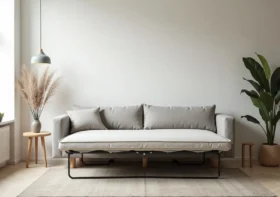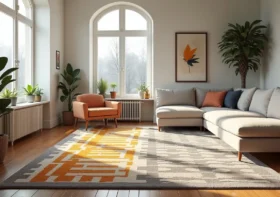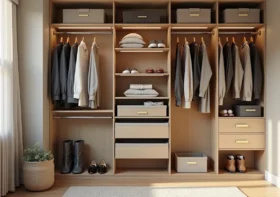Why Contractors Who Ignore These HVAC Trends Get Left Behind

Running an HVAC company used to be all about function—just getting the job done, pipes hidden, airflow strong, temperatures steady. But these days, there’s a design side to it that’s taking off fast.
Contractors are learning that homeowners and commercial clients don’t just want something that works—they want something that fits into the look and feel of a space. Design isn’t just for interior decorators anymore. It’s starting to define which HVAC businesses get chosen and which ones don’t even get a callback.
You don’t have to become a design expert overnight. But if you own an HVAC business and you’re not keeping your eyes on where trends are heading, your quotes might start getting passed over more and more. Here’s what’s changing—and how smart contractors are using it to grow.
Contents
Minimalist, Seamless Systems Are Taking Over
For years, HVAC systems were installed out of sight and out of mind. Now? Not so much. Homeowners are asking for low-profile vents. Designers want ducts that work with open ceiling plans. Architects are leaving less and less room for bulky units. There’s a shift happening where less is more.
That doesn’t mean less performance. It means smoother designs, quieter systems, and vent placements that don’t mess with lighting or the visual balance of a room. People want climate control that blends into their lives, not stuff that sticks out like a thumb you forgot to bandage.
This is especially true in luxury builds, custom homes, and renovated office spaces. If your team can’t talk about design integration, there’s a good chance a client will find a contractor who can. The good news is, this kind of demand gives HVAC companies the chance to upsell higher-end systems and layout planning.
Design-Smart Clients Expect Smarter Marketing
This might sound harsh, but it’s true—most HVAC company websites still look like they were built when people had dial-up. Outdated sites and clunky photos tell customers something you don’t want them to hear: that your business might not be up to date either. If your company is doing clean, modern installs, your online presence should reflect that.
People looking to spend thousands on a system want to trust you from the first click. That starts with professional images, easy-to-use quote forms, and clear, confident explanations of what you offer. And not just the nuts and bolts—showing off style matters, too.
This is where HVAC marketing is shifting. Contractors are using video walkthroughs to show how their installs don’t just function well but look great. Before-and-after shots aren’t just for kitchens anymore. HVAC is visual now. Marketing should be too. The businesses pulling ahead are the ones that show off what they do with pride—both the technical and the aesthetic sides of their work.
Tech Tools That Make the Design Side Easier
You don’t need to go to design school to keep up with the shift—there are tools now that do most of the heavy lifting. One of the best changes for business owners lately has been the rise of planning and estimating programs that are way more design-aware than anything that came before.
With the best HVAC software, you can map out layout plans, adjust duct sizes, drop in returns, and even show how a space will look before a single part goes in. These platforms help your crew work smarter and help your clients see what they’re getting. That builds trust—and faster sign-offs.
What used to take multiple site visits can now be handled with one walkthrough and a good digital plan. Clients love the transparency, and your team avoids costly design mistakes before they happen. These tools aren’t just helpful—they’re turning into essentials. HVAC pros who use them tend to close more deals and spend less time reworking jobs that should’ve been right the first time.
Energy Efficiency Is Part of the Aesthetic Now
Energy costs aren’t just a budget line item anymore—they’ve become part of the design conversation. Homeowners and commercial builders are thinking long-term, and they want systems that feel efficient, not just function that way.
That means visible components, like thermostats and control panels, have to match the style of the home. People don’t want clunky wall boxes anymore. They want slim, smart panels that look good. Some even want them hidden entirely, managed from their phone or tablet.
Airflow design is part of the trend, too. Duct placement and vent size can change how rooms feel, how they sound, even how light moves through a space. Efficiency doesn’t just live in a spec sheet—it lives in how spaces are experienced every day. The more your team can speak that language, the more likely you are to land jobs where appearance matters just as much as output.
Even Commercial Clients Want Aesthetic Control
It used to be that only residential customers cared about how HVAC systems looked. Not anymore. Commercial clients—especially in retail, hospitality, and creative office spaces—are asking for systems that blend into their brand identity.
They’re thinking about exposed ductwork as a design feature. They’re picking colors that match ceiling palettes. Some are even lighting their HVAC components to turn them into part of the decor. It’s a big shift, and it’s one that keeps growing.
The companies winning these contracts are the ones willing to collaborate. They sit in on planning meetings. They show flexibility. They bring options instead of just estimates. Even if you’re used to the industrial side of the trade, this is a chance to bring a creative edge to your bids and stand out from your competitors.
The Takeaway
You don’t need to become a full-time designer. But you do need to know how to talk design, think ahead, and use tools that show you’re evolving with the times. What used to be a back-of-the-building system is now part of the spotlight—and that’s a good thing. It means more opportunities to upsell, more ways to stand out, and more reasons for clients to pick you.
Staying ahead of HVAC design trends isn’t about following fads. It’s about showing your business isn’t stuck in the past. And that, in today’s market, might just be the most valuable thing you can do.



